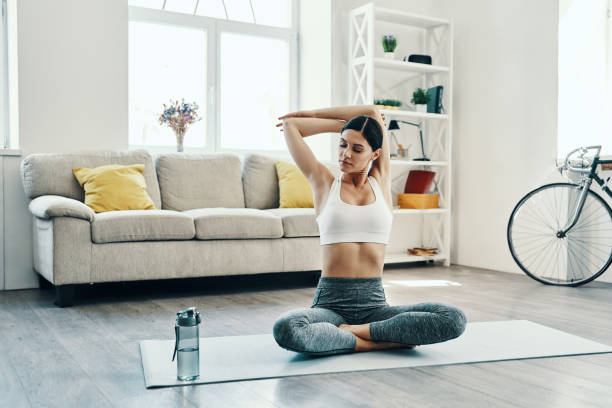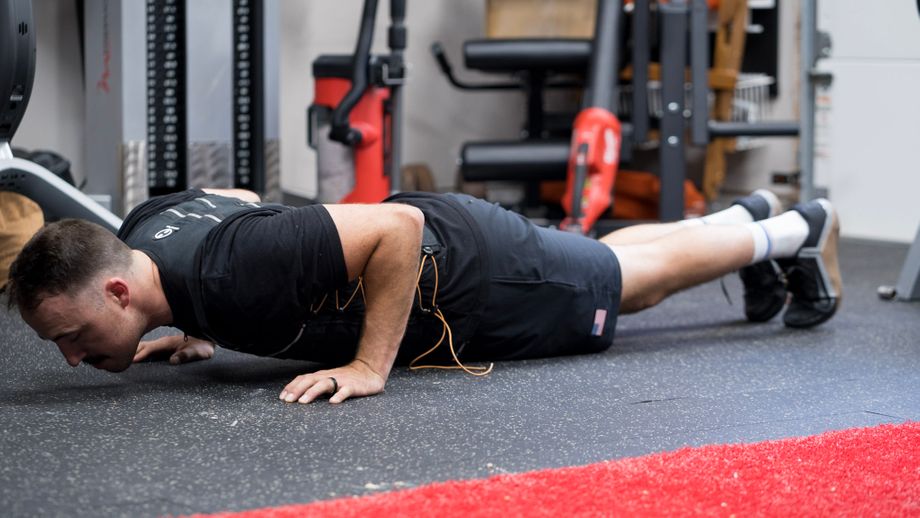
A great fitness journal should contain motivational words and large enough to fit in a gym bag. Some journals offer weekly pages for tracking progress, while others provide a section for setting goals for the week. Whatever your needs are, there's a journal for you. Here are some top-rated fitness journals. There are many sizes and styles to choose from, depending on your needs and your budget.
The Erin Condren PetitePlanner Wellness Journal offers a great way to keep track of your daily activities. There is enough space for up 10 workouts, six meals, and a weekly log. The journal is approximately 7x10 inches and includes weekly views. It does not include extensive workout tracking, but it features two pages per exercise and the ability to track a variety if metrics. Fitspo also offers a weekly overview. Overall, this journal is the best one for keeping track of your workouts and goals.

Important factors are the design and layout of a journal. You should think about how much space you have to keep track of your progress. For example, food-focused fitness journals may record detailed nutrition information, meal planning, and BMIs. Other options include a simple exercise log with a few blank pages. Some fitness journals have side tabs and are easier to carry during the writing process. Some include elastic bands, pens and bookmarks.
You can find an exercise journal that suits your needs, whether you want to track your progress or keep track of it. There are many options for different sizes and shapes. You should consider the size of your journal. Smaller journals are easier to carry around in a bag or purse and more likely to be used regularly. The TrainRite journal is a great example of a small-size fitness journal, measuring just four inches by five inches. It has plenty of space for you to record your workouts.
GymPad could be the perfect choice for those who are experienced in fitness. This journal is simple to use and has space to record daily workouts. It also contains inspirational quotes as well as daily notes. It's also one of the best-priced options, despite its small size. It also allows you to keep detailed records of your workouts. You can find the right fitness journal, no matter how experienced or new you are in working out.

A section for goal tracker is an essential part of any fitness journal if you want to lose weight. This will help you stay motivated and remind of the achievable goals. A majority of fitness journal books include weekly or daily reflections. Some journals offer a writing experience while others have small boxes. It doesn't matter how your journal design is, writing down your daily workouts can be quite therapeutic. Then, you can easily compare your progress to friends and family.
FAQ
How often should I exercise each week?
It depends on how much time you have available and what type of exercise you prefer. The general rule of thumb is to exercise aerobically 3 - 5 days per week. You shouldn't do too much. It is crucial to exercise regularly in order to reap the full benefits of your workouts.
What exercises are the best?
It all depends upon your fitness goals. Some people prefer endurance sports like swimming, cycling, or running. Others like lifting weights or using resistance band. There are many exercise programs on the market today. Find the best option for you.
What diet supplement is best to lose weight?
Weight loss requires diet and exercise. Some people find that certain supplementation can be helpful.
A few studies have suggested that omega-3 Fatty Acids might help weight loss. Omega-3 fatty acid is an essential fat that is important for brain function as well as cell membrane integrity. These fats are found in seafood such as salmon, tuna and shrimp.
Another study suggests that green-tea might help with weight loss. The antioxidants in green tea, catechins and other compounds may increase metabolism and promote weight loss.
Do Men Need A Gym Membership?
For men, a membership to a gym is not required. You will get more value for your money if you join the gym.
Many gyms offer free trial memberships that allow you to test the facilities before signing up for any monthly fees.
The gym is open to all, and you don't have to pay anything. You can cancel or modify your membership anytime you feel you don't like it.
What is a good schedule for a 7-day work out?
Three days per week should be spent on cardiovascular training, including running, biking, swimming, and two strength exercises using free weights, weight machine, as well as one flexibility/core exercise such as yoga, Pilates. Each activity should be done at least once per week. Each session should not take more than 45 mins.
Cardiovascular Exercise: Running, Biking, Swimming
Aim to do at least 60 minutes per week of cardio. Try to do 75 minutes per semaine for the best results. Cardio exercise can stimulate blood flow and increase muscle growth.
Strength Training
Cardio exercises target your heart and lungs. Strengthening your muscles and bones is the opposite. Strength training is a great way to build lean muscle mass that helps you burn calories even if you are not actively exercising.
Flexibility & Core Workouts
Your whole body will be stronger if you have flexibility and core training. Both yoga as well as Pilates are great choices.
Statistics
- An estimated calorie range for moderately active adult males falls between 2,200 to 2,800 calories per day, depending on age. (eatright.org)
- Candidates and applicants must pass all four tests at 70% (minimum level) to graduate from Basic Deputy U.S. Marshal (BDUSM) Training. (usmarshals.gov)
- Cardmembers earn 5% Back at Amazon.com with a Prime Credit Card. (amazon.com)
- Get free shipping and 25% off today. (healthline.com)
- According to the American Heart Association, blood pressure should be checked at least once every two years, beginning at age 20. (my.clevelandclinic.org)
External Links
How To
How can I burn fat and exercise?
Exercise can help you burn calories and increase your metabolism.
Moderate intensity exercise is a safe way to lose weight.
To burn fat while exercising, follow these tips:
-
Do cardio exercises such as walking, swimming, jogging, cycling, running, or elliptical training.
-
Do 30 minutes of exercise three times a week.
-
If you want to lose more weight, add strength training to your routine.
-
Avoid intense workouts. You can build muscle without breaking down muscle tissue.
-
Keep hydrated during exercise. Water helps flush out toxins and keep your body properly hydrated.
-
After working out, make sure to drink low-fat proteins shakes. Protein shakes help repair muscles and boosts energy.
-
Take smaller meals throughout each day to avoid feeling hungry.
-
Don't skip breakfast! Skipping breakfast can make you tired and sluggish.
-
Take care to your mental well-being. Stressful situations can affect your metabolism.
-
Keep a positive attitude. Research shows that overweight people gain more weight if they believe they are overweight than those who believe they look good.
-
Get enough sleep. Lack of sleep makes it harder to burn fat.
-
Active living is key. Get up every hour and get moving.
-
Maintain a healthy diet. You will feel fuller longer if you eat right.
-
Find ways to relax. Relaxing doesn't mean your body releases stress hormones which cause muscle tissue to be destroyed.
A balanced diet will provide all nutrients that are necessary for growth.
Six small meals per day is better than three large meals. This allows your body time to digest what you've eaten.
For strong bones to be maintained, you need approximately 500mg of calcium per day. Calcium can be found in dairy products such as yogurt, fortified soybean beverages, orange juice, cereals, bread, and cereals.
Calcium can be found in leafy green veggies, beans, tofu and nuts as well as seeds, nuts and cheese.
Vitamin D is necessary for the body to absorb calcium. Vitamin D is found in eggs yolk, fatty fish and fortified foods.
Vitamin E is crucial for skin health. Vitamin E can also be found in vegetable oil, wheat germ oils, peanuts as well almonds, sunflower seeds and corn.
Your body needs zinc to maintain normal immune function and heal wounds. Zinc is found in seafood, oysters legumes meats, whole grains, whole grains and meats.
Zinc deficiency could cause fatigue, nausea, vomiting, and depression.
Insulin resistance is caused by eating too much sugar, which can increase blood glucose levels. Insulin resistance leads directly to weight gain.
When there is a high level of free radicals, insulin resistance can develop. Free radicals refer to molecules that contain unpaired electrons. They can damage cell membranes and other body parts.
The most common sources of free radicals include food additives.
Free radical damage can lead to cancer, heart disease, diabetes, arthritis, asthma, and aging.
To prevent free radical damage, eat a healthy diet rich in antioxidants. Antioxidants protect against oxidative damage.
Vitamin C is found in citrus fruits and beta carotene is found in carrots.
Selenium, manganese (and zinc) are other antioxidant nutrients.
Selenium helps protect cells from oxidative damage caused by free radicals. Selenium can be found in Brazil nuts and liver, kidneys, liver, kidneys, shrimp, cod, turkey and lamb as well as chicken.
Copper protects the brain and eyes as well as the lungs and red blood cells. Copper can be found in meat, shellfish, meat, and organ meats.
Manganese forms an essential part of bone structure. Manganese can also be found in oatmeal, brown rice, spinach and bananas.
Zinc is required for normal growth, reproduction and wound healing. Zn can be found in lean cuts, white fish, poultry, eggs, and other foods.